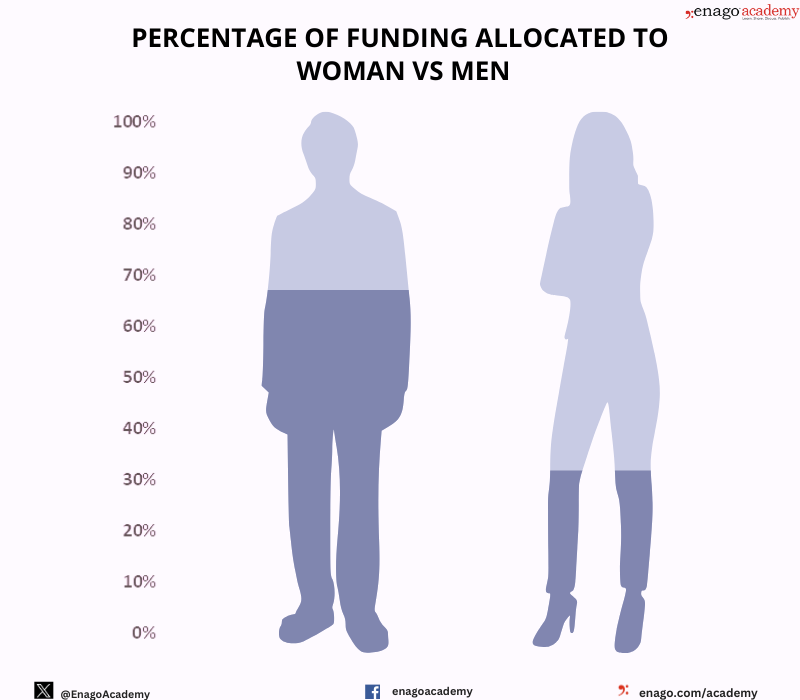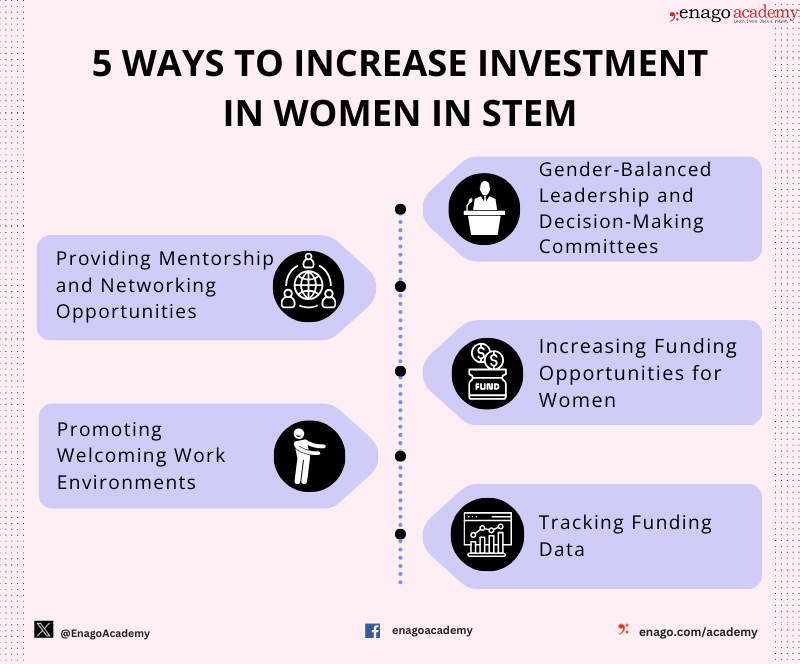The Silent Struggle: Confronting gender bias in science funding

In the 1990s, Dr. Katalin Kariko’s pioneering mRNA research seemed destined for obscurity, doomed by a lack of funding. Demoted by the University of Pennsylvania, this determined Hungarian immigrant persisted tirelessly, believing mRNA could spark a breakthrough.
Years later, Kariko’s mRNA work enabled the rapid creation of COVID-19 vaccines. Her journey to becoming a Nobel laureate reveals the scientific leaps that could be achieved by women researchers. But it also raises an important question – How many potential lifesavers have been lost because the system won’t invest equally in women’s research?
Equity in research investment is crucial because genius and grit doesn’t differentiate between gender.
Recent studies reveal a striking gender gap in research grants. Women receive, on average, $41,000 less than men from the NIH, hindering careers and limiting exploration. This disparity persists even in women’s health studies, with projects from female principal investigators facing disproportionately high rejection rates.
Across the US and Europe, the data shows consistent funding disadvantages for women in science:

This silent struggle exists in academic space globally, depriving many women researchers of the opportunity to showcase their brilliance.
Women Making Waves in Science
While enormous gaps remain in research funding allocation, some brilliant women scientists have managed to break through barriers and secure major grants for significant projects. Their success demonstrates women’s capabilities to lead innovative research.
Global leaders have committed to closing funding gaps through initiatives like the UN SDG 2030 agenda which calls for gender equality and empowerment in research and public life. The SDG priorities make it clear that achieving funding equity in science is essential; agencies cannot claim to support gender equality while continuing lopsided grant allocation.
Navigating Gender Based Barriers in Science Funding
Women in STEM encounter multifaceted obstacles impeding their progress, including subconscious bias affecting funding decisions and collaborations, alongside disparities in research funding and workload distribution. These challenges underscore the need for systemic changes to foster gender equity and support women’s career advancement in scientific fields.
1. Confronting Subconscious Bias
Women in STEM face implicit gender biases that influence funding decisions, collaborations, and citations. Studies reveal both men and women view male scientists as more competent and qualified. These subconscious attitudes skew assessments of merit and “quality”, leading funding panels to undervalue women’s proposals due to their chronic subtle biases.
2. Investigating Funding Biasness
Statistics underscore significant disparities in research funding along gender lines, with women receiving nearly 40% less in grant amounts compared to their male counterparts. Moreover, they face challenges in securing adequate resources and staff for their initial labs, while funding for women’s health research remains disproportionately underfunded.
3. Workload Disparity
Women academics spend less time on research compared to male counterparts. This is partly due to women being tasked more often with teaching, mentoring, and service activities. Additionally, women face many barriers, like bias and lack of support, that reduce research time. Less research time leads to fewer grant submissions and applications, impacting career advancement. Though funding agencies may show no gender bias, getting to top ranks requires systemic changes enabling women’s research productivity across all career stages.
4. Limited Networks & Social Capital
Limited networks and social capital pose significant challenges for women in academia, hindering their access to key collaborations, mentorship opportunities, and institutional support necessary for career advancement. Research shows that women often face exclusion from influential circles dominated by male scientists, resulting in reduced visibility and resources. This disparity in network access impacts women’s ability to build research reputations and secure funding, perpetuating gender inequities in academic and professional settings.
5. Absence of Role Models
The lack of visible senior women scientists’ further obscures potential career paths for younger women. Seeing few female deans, journal editors, and grant takers makes such heights seem unreachable. Imposter syndrome compounds when women lack same-gender role models to aspire to.
Importance of Allyship
Allies play a critical role in advancing equity and representation for women in science. With their leadership positions, men can drive change from within existing power structures. Allies can advocate for women colleagues in ways that combat unconscious bias.
Allies can act as an indispensable part in creating a more equitable funding system by using their privilege in the right way.
5 Ways to Increase Investment in Women in STEM
Advancing investment in women in STEM requires a strategic approach and concerted efforts that target an inclusive and supportive ecosystem that empowers women scientists to excel and contribute significantly to their fields.
 1. Gender-Balanced Leadership and Decision-Making Committees
1. Gender-Balanced Leadership and Decision-Making Committees
Increasing the representation of women in leadership and decision-making roles on funding committees, academic appointment committees, and other key positions can help mitigate gender bias. Studies show organizations should aim for more female representation at higher decision levels and be transparent about the gender breakdown of their committees. They should actively recruit qualified women and be willing to provide training to prepare women for leadership roles if needed.
2. Providing Mentorship and Networking Opportunities
Mentorship and networking are vital for career advancement and access to funding opportunities. Organizations should implement formal mentoring programs to connect junior women scientists with senior colleagues who can provide advice, sponsorship, and introduction to key contacts. Conferences and professional associations should organize networking events for women scientists to meet peers and interact with leaders in their field.
3. Increasing Funding Opportunities for Women
Funders should set goals and track data to ensure more grants and awards go to women scientists. This may involve proactively recruiting women on selection committees, using implicit bias statements in selection criteria, or setting targets for the percentage of grants awarded to women. Special funding programs just for women can help establish equitable ground for their growth. Funding databases, Scientify Research’s database, has exclusive database for funding for woman in research. This helps increase access and provide support.
4. Promoting Welcoming Work Environments
Institutions must create environments where women can thrive through policies like paid family leave, stopping the tenure clock for parental leave, anti-discrimination training, and zero tolerance for harassment. Transparency around promotion criteria and salaries can effectively prevents gender biases.
5. Tracking Funding Data
Organizations should track applications, success rates, funding amounts, and demographics across gender, race, discipline and other parameters. This allows gaps to be identified and progress monitored over time. Data should be publicly shared to hold institutions accountable. Regular diversity reports and equity reviews can be used to spot problems early. Goals can then be adjusted accordingly to counter those issues.
The time has come to break the silence surrounding gender bias in science. So where do we go from here? The path forward must be paved with bold, collaborative action. Funding agencies have the power to implement new policies that give women an equitable shot at grants. Institutions can create supportive environments where women thrive at every career stage. And prominent scientists, can leverage their privilege to actively champion talented women colleagues.
Have you ever experienced gender disparity in your scientific journey? Join the chorus of voice for change by sharing your experience on our Open Platform or participating in our podcast.













